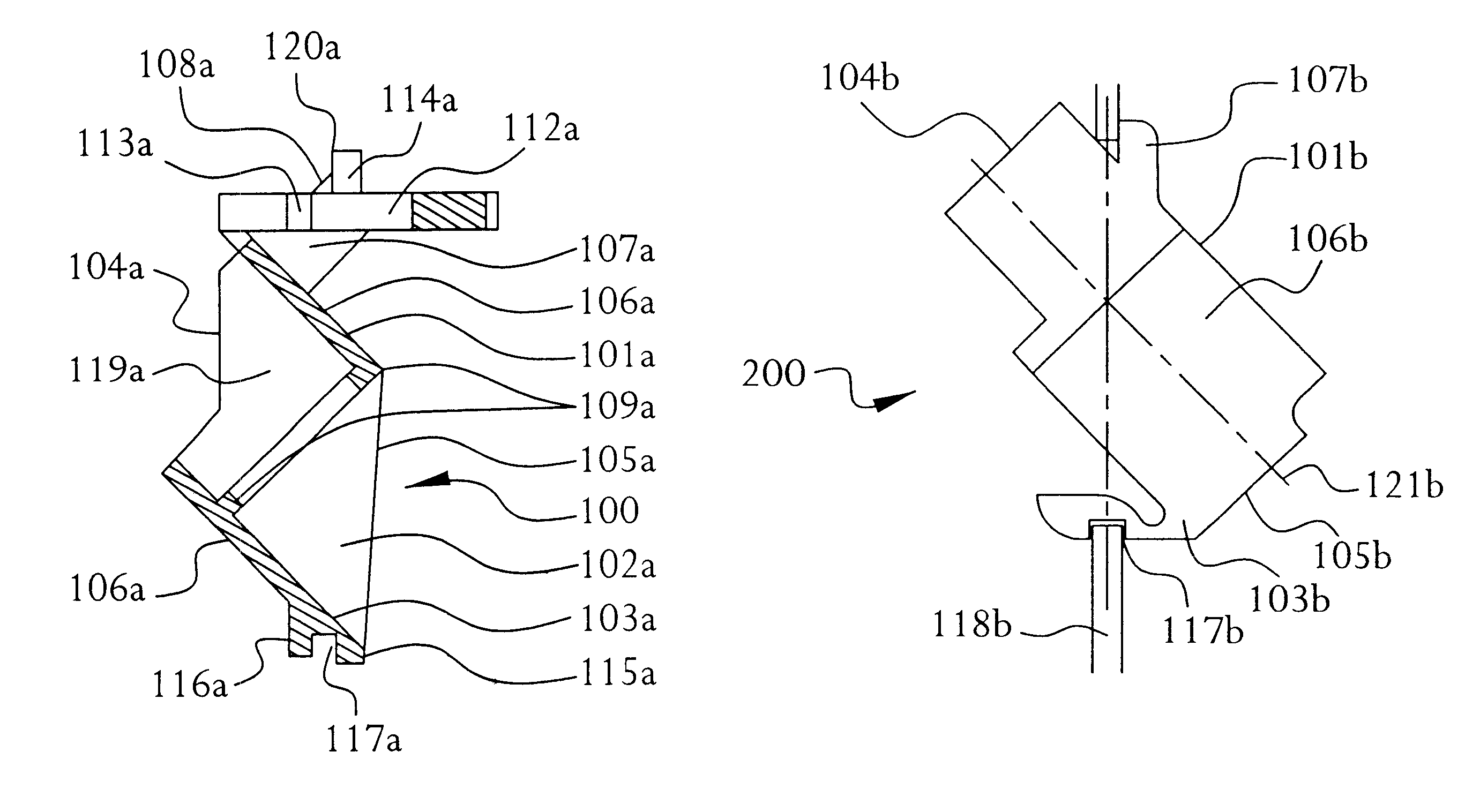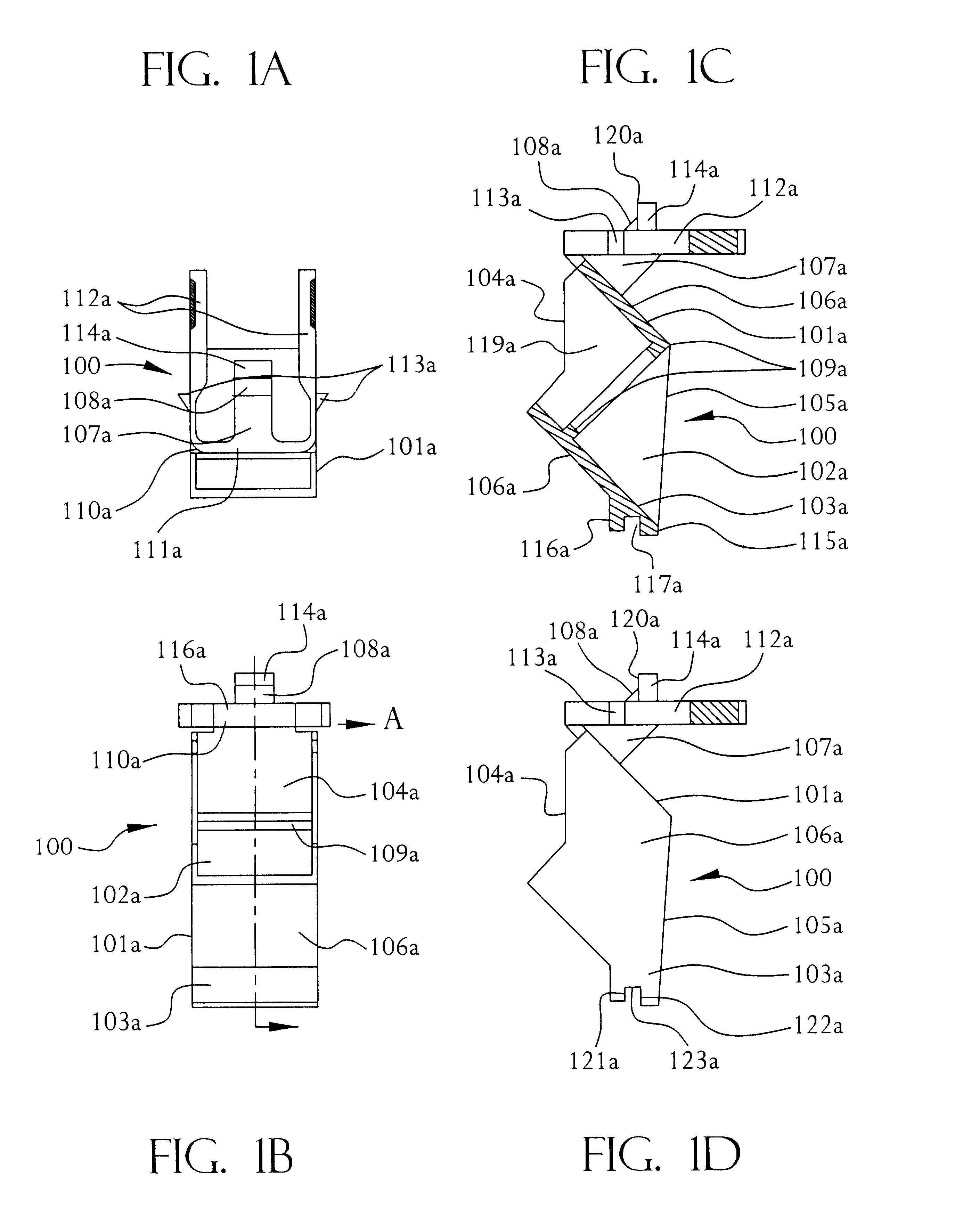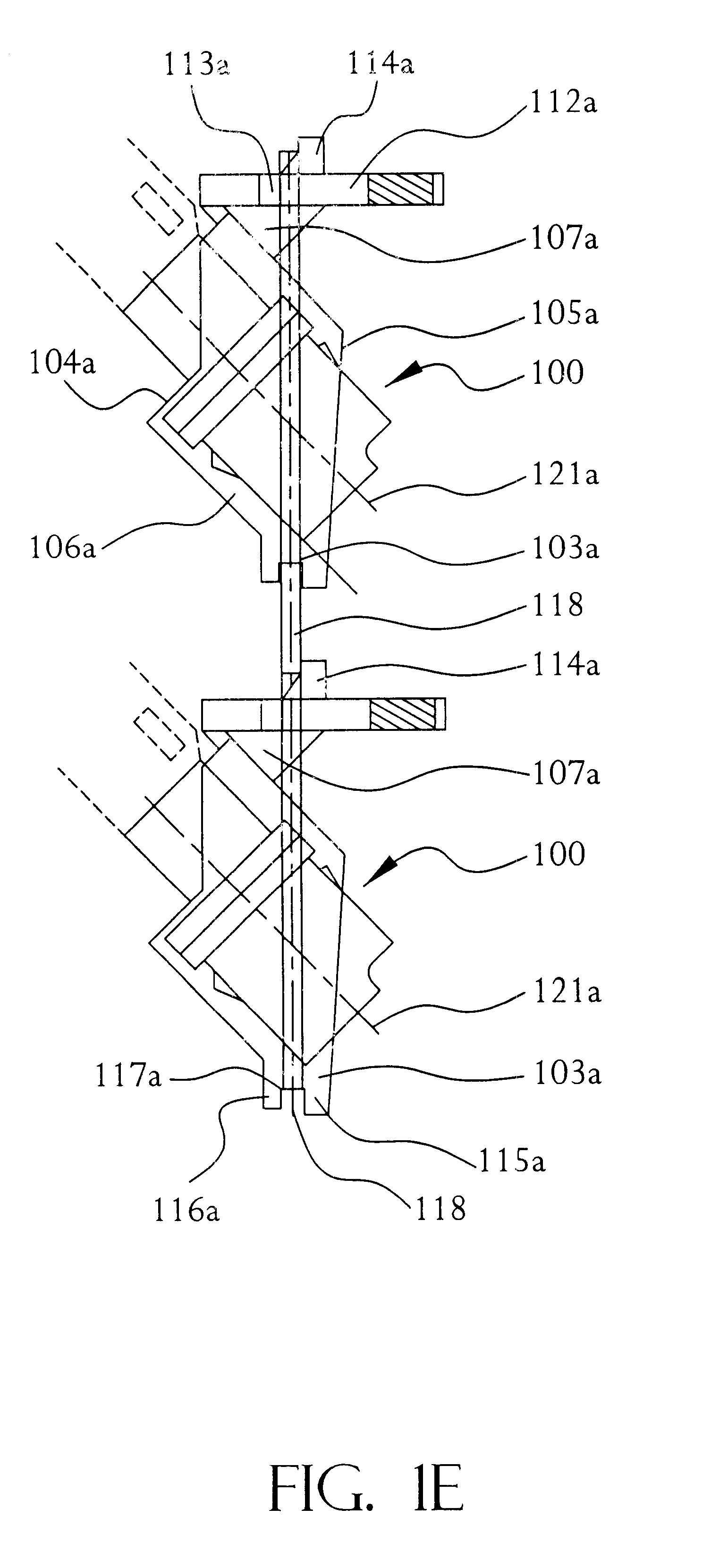Angular mounted optical connector adaptor frame
a technology of optical connectors and adaptor frames, which is applied in the direction of optical elements, coupling device connections, instruments, etc., can solve the problems of increasing the depth of the electrical cabinet or closet, increasing the cost and increasing the difficulty of manufacturing a panel with angular connection points
- Summary
- Abstract
- Description
- Claims
- Application Information
AI Technical Summary
Problems solved by technology
Method used
Image
Examples
first embodiment
Throughout the following detailed description similar reference numbers refer to similar elements in all the Figs. of the drawings. Referring to FIGS. 1A-1D, several views of the invention are shown. Frame 100 is comprised of housing 101a, pivot 103a, stop 107a, and latch 110a. Frame 100 may comprise a single plastic injection-molded assembly, or an assembly of a number of components some or all of which may be plastic or other suitable material. Latch 110a should be formed of a material that is flexible but does not tends towards plastic deformation easily.
Housing 101a is open at front 104a and rear 105a to form central passageway 102a. The central axis 121a of central passageway 102a should form an oblique angle with the plane of the horizon. Forty-five degrees is optimal, but the oblique angle may be anywhere in the range of 15 to 75 degrees. Central passageway 102a receives and supports two cables joined by connectors or a connector-adaptor assembly when mounted to a flat panel ...
second embodiment
Referring now to FIGS. 2A-2D, several views of the invention are shown. Frame 200 is comprised of housing 101b, pivot 103b, and stop 107b. Frame 200 may comprise a single plastic injection-molded assembly, or an assembly of a number of components some or all of which may be plastic or other suitable material. The spring arm portion of pivot 103b should be formed of a material that is flexible but does not tends towards plastic deformation easily.
Housing 101b is open at front 104b and rear 105b to form a central passageway (not shown). The central axis 121b of the central passageway should form an oblique angle with the plane of the horizon. Forty-five degrees is optimal, but the oblique angle may be anywhere in the range of 15 to 75 degrees. The central passageway receives and supports four cables joined by two connector or connector adapter assemblies when mounted to a flat panel 118 as shown if FIG. 2D. It will be appreciated however that frame 200 is not limited in the number of ...
third embodiment
Referring now to FIGS. 3A-3D, several views of the invention are shown. Frame 300 is comprised of first housing 301 and second housing 308. First housing 301 is comprised of base 302, side walls 303, and front 304. First housing front 304 and base 302 are open to first cavity 317 formed by first housing side walls 303. A rectangular ridge 306 protrudes from one of the first housing side walls 303 along axis 315 which forms an oblique angle with the one of the first housing side walls 303. Forty-five degrees is optimal, but the oblique angle may be anywhere in the range of 15 to 75 degrees. A face of rectangular ridge 306 and the one of the first housing side walls 303 define mounting notch 307. It will be appreciated that ridge 306 need not be rectangular in shape but may take a variety of different forms.
Second housing 308 is comprised of base 309, side walls 310, and front 311. Second housing front 311 and base 309 are open to second cavity 318 formed by second housing side walls ...
PUM
 Login to View More
Login to View More Abstract
Description
Claims
Application Information
 Login to View More
Login to View More - R&D
- Intellectual Property
- Life Sciences
- Materials
- Tech Scout
- Unparalleled Data Quality
- Higher Quality Content
- 60% Fewer Hallucinations
Browse by: Latest US Patents, China's latest patents, Technical Efficacy Thesaurus, Application Domain, Technology Topic, Popular Technical Reports.
© 2025 PatSnap. All rights reserved.Legal|Privacy policy|Modern Slavery Act Transparency Statement|Sitemap|About US| Contact US: help@patsnap.com



